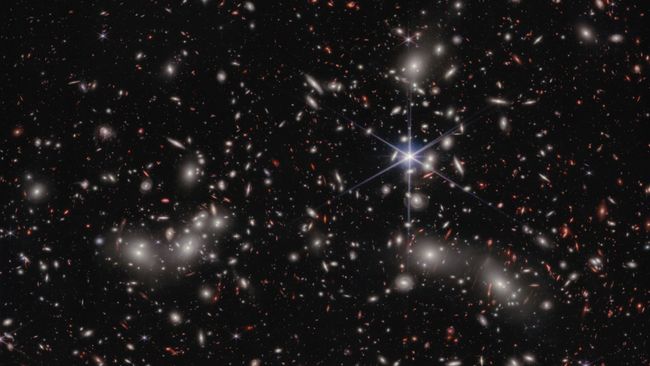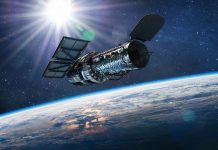Even earlier
The James Webb Space Telescope (JWST) discovered the two most distant galaxies at redshifts 13.079 and 12.393. This discovery supports the Big Bang theory and further confirms the picture of galaxy formation.
The discovery was made possible thanks to a gravitational lens played by the galactic cluster Abell 2744, also known as the Pandora Cluster. This cluster is located about 3.5 billion light-years away, and its gravitational field bends the structure of space-time in such a way that it “magnifies” distant galaxies. Using JWST and its ability to probe early galaxies magnified by this gravitational lens, researcher Bingjie Wang of Penn State University and her colleagues in the JWST UNCOVER program were able to discover these two galaxies with the highest redshifts.

Cosmological redshift occurs due to the expansion of the Universe. The further away the galaxy, the more the universe expanded as the light from that galaxy traveled through space to reach our detectors. Galaxies that existed just 300 to 400 million years after the Big Bang emit infrared light that is invisible to the human eye but can be observed by the NIRCam camera and JWST’s NIRspec spectrometer.
The James Webb Space Telescope discovered two unusual distant galaxies
The researchers were able to identify enlarged images of these two high-redshift galaxies – UNCOVER-z13 and UNCOVER-z12 (z indicates redshift, which is the letter used in astrophysics). UNCOVER-z13 has a redshift of 13.079, making it the second most distant galaxy known to date. We see it as it was just 330 million years after the Big Bang. The most distant confirmed galaxy, JADES-GS-z13-0, has a redshift of 13.2 JWST discovered it in 2022.
The second galaxy, UNCOVER-z12, has a redshift of 12.393 and ranks fourth on the list of most distant galaxies. We see it as it was just 350 million years after the Big Bang.
These two galaxies stand out because of their appearance—unlike other galaxies at comparable redshifts, they do not appear as small dots. In contrast, the UNCOVER-z12 galaxy has a disk approximately 2,000 light-years in diameter, six times larger than other galaxies observed during this period.
“The two galaxies have very different properties. Their differences will be the subject of further research. We expected that these galaxies are formed from similar materials, but now we see significant differences between them,” noted Bingji Wang.
Despite these differences in the properties of the galaxies, both are fully consistent with the Big Bang model, even so early in the Universe. The model explains how, after the creation of the Universe, galaxies slowly grew, merged with other galaxies and gas clouds, and actively formed stars.
This growth contributed to an increase in the diversity of elements contained in young galaxies and the introduction of heavy elements – heavier than hydrogen and helium. The galaxies discovered by UNCOVER JWST are young and small, with low concentrations of heavy elements, and are actively forming stars, supporting the Big Bang theory, as noted by Joel Leja, a member of Wang’s team.
JWST has the ability to detect galaxies at even higher redshifts than UNCOVER-z13 and -z12. But they were not captured by the gravitational lens created by the Pandora Cluster.




